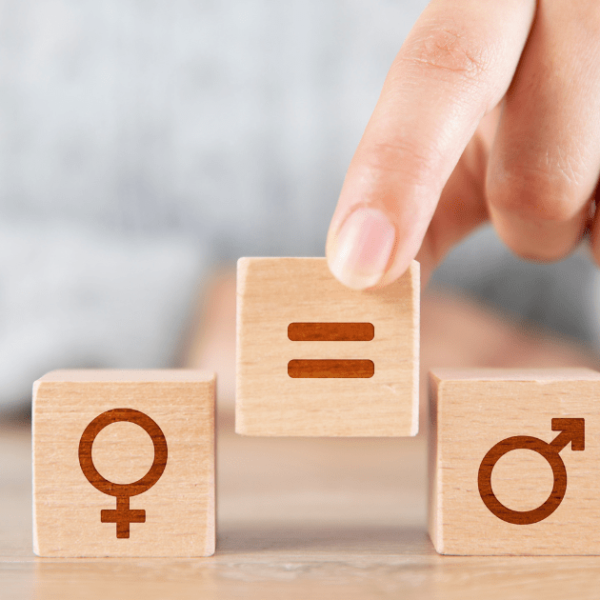Robots for the treatment of children with ASD

Robots for the treatment of children with ASD

In recent years, the use of robots in the treatment of children with Autism Spectrum Disorder (ASD) has been brought to the table. What benefits does this type of therapy offer?
Table of contents
What is ASD?
The concept of ASD (Autism Spectrum Disorder) emerged in 2013 when the American Psychiatric Association (APA) unified autism and Asperger’s syndrome under a single diagnosis, considering both conditions shared very similar traits. According to this categorization, ASD is a neurodevelopmental disorder that mainly affects communication and social interaction, characterized by the presence of very rigid thought patterns. Some examples include focus on interests, deficits in emotional expression, and problems with nonverbal expression. The first signs can be observed in very early stages of individual development, between the first and third year of life.
Another peculiarity of ASD is the diversity of ways in which it can manifest. This is why the concept of a spectrum is used. Each person expresses difficulties in communication, social interaction, and cognitive rigidity differently.
Robots for children with ASD
In recent years, numerous scientific studies, such as the one conducted by the University of the Balearic Islands, have investigated the use of robots to support the development of the learning process in children with Autism Spectrum Disorder (ASD). The conclusions suggest that the predictable and consistent interactions of robots make them feel comfortable, as individuals with ASD tend to have a strong aversion to unpredictability. Additionally, robots are capable of generating motivation to carry out tasks and activities, while also helping children engage in social interactions that may otherwise be threatening in other contexts.
Experts emphasize the importance of designing robots with highly personalized programming that can address the needs of each child. However, they warn that the robot should not be conceived as a teacher or a social worker, but rather as a support tool. In this sense, it should not be an end in itself, but rather the aim should be for the relationship between the child and the robot to serve as a starting point for reinforcing the child’s sociability.
Benefits of using robots for children with ASD
Some of the benefits of this type of therapy are:
- Improves communication skills and expression of emotions. The robot encourages the child’s participation through interactive communication, with visual aids, voice synthesis, and programmed instructions. This enhances the ability to express emotions and empathize with others. Additionally, it creates a comfortable and non-judgmental space where children can develop their skills.
- Facilitates social interaction. The security provided by a robot, through controlled repetitions, allows for more effective interaction. Imitation, turn-taking, and eye contact simulate real-life interactions that teach appropriate responses and gestures for different situations. They can also be useful as mediators and objects of shared attention with adults and peers. The ultimate goal is for children to use all this knowledge in interactions with humans.
- Provides routine. Predictability and routine establish coherent behavior patterns that provide security and stability for children with ASD. This reduces crises and anxiety.
- Promotes play and learning. Often, children with autism have difficulties playing and learning. Robots are capable of adapting to the child’s specific interests to program educational games. Thus, learning becomes a more fun and effective task.
- Simplifies the learning process. Interaction with the robot is simple and helps simplify the learning process. Similarly, it avoids information overload that could overwhelm the child.
Types of support robots for children with ASD
Currently, there are different types of robots. Although each of them has its specificities and its scope of action, in broad strokes we can distinguish them based on their objective, that is, the way they provide support to children with ASD. Thus, we find three classifications:
- Social robots. Thinking androids to interact with children with ASD, with conversations, signals, or expression of emotions.
- Educational robots. Tools that aid during the children’s learning process, using attractive tools to teach different subjects and skills in an organized manner.
- Assistive robots. Robots that provide support in everyday activities. This way, they can reinforce their confidence and independence. For example, with activities such as dressing, brushing teeth, or organizing themselves.
Some examples of robots for children with ASD
Over the past few years, there has been a significant increase in the use of support robots for children with Autism Spectrum Disorder, accompanied by a rise in research on this practice and its benefits. Below, we outline some significant initiatives in this field:
- AURORA. In the late nineties, Kerstin Dautenhahn (University of Reading, England) carried out a pioneering work in the field of robots and autism. The AURORA project aimed to enable children with autism to use a mobile autonomous robot to take initiatives and engage in various actions. According to Dautenhahn, “repetitive behavior can be interpreted as a way to escape from the overstimulation, visual or auditory, that many people with autism experience.” For this reason, a robot easily programmable to perform repetitive and predictable movements can establish “a link between the child and the surrounding world.
- Aisoy 1. Another example is Aisoy 1, a robot capable of recognizing the person with whom it interacts and simulating emotions. Although initially not designed to help children with autism, a study by the MIT Media Lab used the model for this purpose, with a positive result.
- MILO. The first humanoid robot with facial expressions arrived in Spain in 2022, under the name MILO. It is a model that the Polytechnic University of Cartagena (UPCT) purchased from the American company RoboKind. The academic institution acquired it without configuration in order to be able to program it with its own protocol that addresses the emotions and reactions of the child during interaction with the robot. The main objective is to reduce the stress and pressure of children with ASD during exchanges with other people, while training them with the most predictable and simple interactions of the robot. MILO measures 60 cm, has a human-like toy-shaped face, and is capable of expressing emotions through smiles and grimaces, among others.
In conclusion, the use of robots in children with ASD allows for improvement in their social interaction, thanks to the ability to perform repetitive and predictable actions. This possibility, along with the customization of the device, makes the robot an innovative tool that brings new intervention methods to the table in this field.
References
¿Qué es el TEA?, EspacioAutismo. Available in: https://telos.fundaciontelefonica.com/la-cofa/robots-sociales-que-ayudan-a-abrirse-al-mundo-al-nino-autista/ [12/03/24]
Programación de Robots para mejorar la atención terapéutica de niños con Trastornos Generalizados del Desarrollo (TGD), Diego Paracuellos de los Santos. Universitat Politècnica de València. Available in: https://riunet.upv.es/bitstream/handle/10251/91794/PARACUELLOS%20-%20Programaci%C3%B3n%20de%20Robots%20para%20mejorar%20la%20atenci%C3%B3n%20terapeutica%20de%20ni%C3%B1os%20con%20Trastornos….pdf?sequence=1 [12/03/24]
Robots sociales que ayudan al niño autista a abrirse al mundo, Pablo Rodríguez Canfranc. Telos (Fundación Telefónica). Available in: https://telos.fundaciontelefonica.com/la-cofa/robots-sociales-que-ayudan-a-abrirse-al-mundo-al-nino-autista/ [12/03/24]
Robots para autismo: ¿el futuro de una terapia eficaz de ayuda?, Autismo En Vivo. Available in: https://www.autismovivo.org/post/robots-para-autismo-el-futuro-de-una-terapia-eficaz-de-ayuda [12/03/24]
El robot social de Elche que se cruzó en Kansas con un niño autista, Ana Hernando. SINC. Available in: https://www.agenciasinc.es/Reportajes/El-robot-social-de-Elche-que-se-cruzo-en-Kansas-con-un-nino-autista [12/03/24]
Así es Milo, el primer robot con emociones que interactúa con el autismo y que ya está en Cartagena, Jorge García Badía. El Español. Available in: https://www.elespanol.com/omicrono/tecnologia/20220713/mylo-primer-robot-emociones-interactua-autismo-cartagena/687431519_0.html [12/03/24]
Robot como tratamiento para niños con autismo, Jessica Davó García. El mundo del autismo. Available in: https://www.elmundodelautismo.es/el-robot-como-tratamiento-para-ninos-con-autismo/ [12/03/24]
Use of technology in interventions for Children with Autism, Tina R. Goldsmith, Lina A. LeBlanc. APA PsycNet. Available in: https://psycnet.apa.org/fulltext/2014-52005-004.html [12/03/24]
Robots sociales como promotores de la comunicación en los Trastornos del Espectro Autista (TEA), Virginia Pinel, Laura Aguiló Rendón, Daniel Adrover-Roig. Letras de Hoje. Available in: https://www.scielo.br/j/lh/a/bgNcrznydKySBCKJPtyW7HG/# [18/03/2024]
Articles







